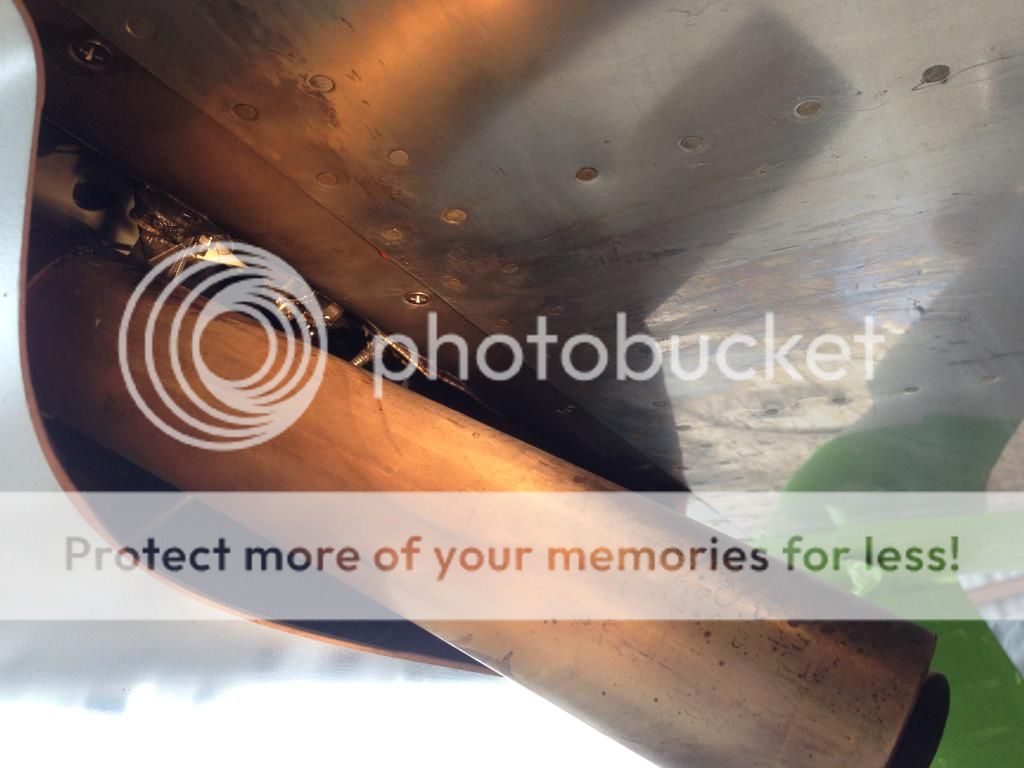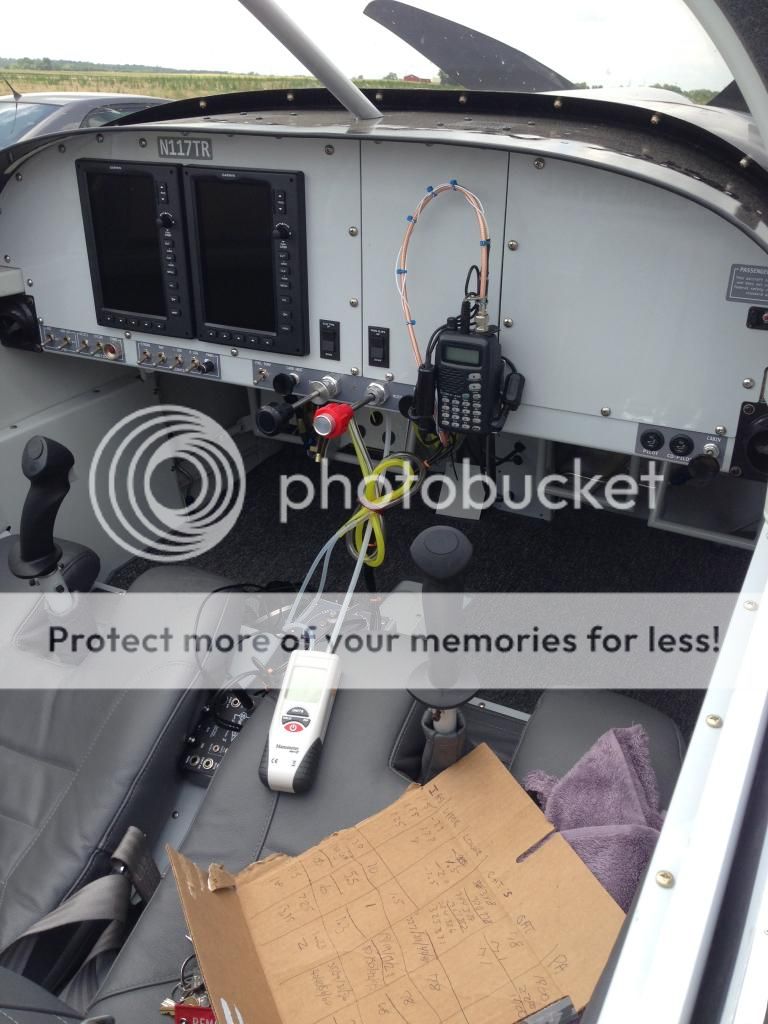I finally received my Man-O-Meter and had a little time to play with it. The tubing is routed from the upper and lower piccolo tubes from the cowling and the other side of the Man-O-Meter is tapped into my static line. Boulevard Brewing promotes recycling of their boxes and since I forgot my kneeboard the donor Pale Ale box made a good scratch pad.
On this flight I was only after plenum pressure differentials, the readings on the Meter fluctuated about .40 and I tried to record the average. The Man-O-Meter does have an average function but I have to learn how to use it. I made 2 flights 4 hours apart at approximately 2000 Pressure Alt. and 78*F with plenum pressure differential measured between static pressure in in/H2O. Here's the rough averages:
115 knts IAS-upper plenum 7.5 In/H20-lower plenum 1.4 In/H2O
130 knts IAS-upper plenum 9 In/H2O-lower plenum 1.5 In/H2O
160 knts IAS-upper plenum 13.25 In/H2O-lower plenum 2 In/H2O
Significant differences from my water manometer in the cabin on the yard stick using cabin static pressures. Referencing this thread and graph
http://www.vansairforce.com/community/showthread.php?t=114568&highlight=lycoming+cooling&page=4 post #33
my CHT's seemed to follow the graph pressure differentials.
My RV7 has an O-360 with dual EFII electronic ignition, standard Van's baffles and a Catto 3 blade. I believe my CHT's are higher because the electronic ignition completely burns the available fuel as well as possible advanced timing. I don't have a noticeable RPM rise while leaning from 200* ROP to peak EGT. I've got a very basic timing curve explanation but want a more complete explanation before commenting. At 80's*F OAT at 1000 Pressure Altitude CHT's have no issue staying under 390 above 130 IAS.
I also have 2 data sets at 100 IAS, 1 low power level at 100 IAS and 1 full power and 100 IAS climb. This is the realm of flight I'm most interested in cooling better. I started at 1800 Pressure Altitude and 78*F OAT.
Low power and level:
IAS 100-upper plenum 5.5 In/H2O-lower plenum 1 In/H2O
Full power climb:
IAS 100-upper plenum 6 In/H2O-lower plenum 1.3 In/H2O
Low power CHT's were average 320's, after the full power climb from 1800-5000 CHT's were 380/350/392/395 (1,2,3,4)
Not sure where this data leads me to next.....
-Seal lower cowling behind spinner/gear legs/vertical induction scoop/cowling seams.
-reshape cowling to "throttle" the exit
-cowl flap for low speed high power cooling
-just fly this one while I build the next one better!








